#zostera
Explore tagged Tumblr posts
Text

Andrey Shpatak, "44°20'12.0"N, 135°50'12.0"E,
#art#surreal#photography#creepy cute#creepy art#freaky#russia#octopus#giant#algae#zostera#andrey shpatak#animal photography#wildlife#underwater#wildlife photography#wildlife photographer#nature#nature wonders
16 notes
·
View notes
Text

"Plantes de la période devonienne" [Plants of the Devonian period] from La terre avant le déluge [The world before the deluge] by Louis Figuier, 1863
Previously published in The past and present life of the globe. Being a sketch in outline of the world’s life-system by David Page, 1861
#la terre avant le deluge#world before the deluge#louis figuier#1863#devonian#palaeobotany#Algues#Zostera#Psilophyton#past and present life of the globe#david page
3 notes
·
View notes
Text
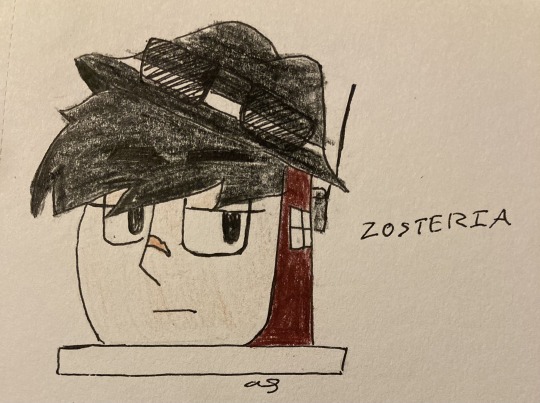
the first official tugs oc i made, meet my main zed oc - zosteria!
The tough, quiet and intimidating ocean-going tug of the Zed Fleet, Zosteria is not a tug you want to mess with. Sharing the same large frame as Hercules - with the edition of an icebreaker hull - it's easy to think she's just as headstrong and snarky as her fleetmates from first glance, but it's actually quite the opposite. Having served further north as an icebreaking and long-haul tug, Zosteria is not one of many words and definitely not one for rivalries, mainly focused on doing her job within the Bigg City Port. The scar she has was caused by a chunk of an iceberg falling and hitting her pretty badly on the face when she was trying to break it up, leaving her with a little mark of it. But when push comes to shove, Zos knows how to keep her cool and not let her size and strength get to her head, undoubtedly serving as one of the more rational-minded tugs of the Zeds alongside Zebedee. But something that a lot of tugs don't expect is the fact that she's actually Zip's older sister. Yes, the clueless and not-very-bright youngest switcher of the Zed fleet is the younger brother of one of the toughest and biggest tugs of Bigg City Port. The whole reason why Zos joined the Zed Stacks in the first place was because Zip was part of them. The siblings were separated in a fierce storm and left the two uncertain of the others fate for four whole years. But now that they've found each other again, you bet that Zosteria is determined not to lose her brother again.
[can you tell i like giving canon characters sibling ocs yet?]
Even though Zosteria is a Zed Stack and significantly increases the competition between the Stars and the Zeds - having an ocean tug does wonders for the contracts Captain Zero is able to land after all - she doesn't actively participate in her fleetmates antagonization of their competitors. Although this is usually because she's outside of the port doing other jobs, while she's there she typically stays quiet unless a tug goes out of line, and she's quick to snap back. To the surprise of both of their fleets, Zosteria and Hercules actually get along quite well and consider each other friends - mostly because they're happy to have the company of another ocean tug since work out on the open sea gets lonely pretty fast. She also gets along really well with Zebedee and considers him her closest friend, and he's glad to have another tug that he doesn't feel like he has to hide who he really is to get along with, unlike most of the Zed fleet. Everyone else [besides Zip of course] she considers to have a pretty neutral relationship with, not really considering anyone her enemy. [eeexcept for maybe bluenose she really doesn't like him but then again who does lmao]
Put it simply, Zosteria is a tough and quiet tug that won't do anything to you unless you do something to her.
#tugs oc#this is tugs#bigg city port#tugs fanart#zed stacks#she's strong and takes no shit#i love her#lowkey surprised i haven't seen more variations of zed stack ocean tugs within the fanbase#also fun fact!! zosteria was apparently derived from zostera which was a surname in athens in ancient greek times#so ig every ocean tug has a name relating to ancient greece or rome lmao
20 notes
·
View notes
Text



Briefmarke / Postage Stamp / Frimärke
Åland Europa (C.E.P.T.) 2024 - Algräs (Zostera marina)
Ausgabetag: 08.05.2024 Design: Katja Syrjä, Johanna Finne
#Åland#Philatelie#Limnologie#limnology#philately#stampdesign#Briefmarkengestaltung#filateli#Eelgrass#Algräs#Zostera marina#Seegras#Katja Syrjä#Johanna Finne
5 notes
·
View notes
Text
Seaweed hitchhikers catch a ride on limpets
Marine ecosystems around the world are experiencing an influx of non-native species as global trade and traffic increases. Scientists have long studied how factors like shipping contribute to the spread of invasive organisms, but new research by Louise Firth and colleagues, published in Annals of Botany reveals an overlooked player: the humble limpet. The research team found that the Atlantic…

View On WordPress
0 notes
Text





Gym Leaders for the Amile Region— my Florida based Pokemon fan region!
Juan— the fighting type gym leader— is an up and coming rapper who blew up because of his meme status and Edgar-ness. - Taya— the Dragon type gym leader— aims to blend opera and pop to bring classical music to a wider audience
Paddock— the Water type gym leader— is probablt water type due to how much he cries on any given day. He’s very much in the realm of Mitski style emotionally devastating music.
Fica— the Electric type gym leader— is a former social media starlet turned pop princess who loves fast cars and beating the industry plant allegations.
Scotch— the Fire type gym leader— is a pretty established reggae musician who’s well known for his high-energy live performances in both music and in battle. His little cousin is your rival.
Zostera— the Flying type gym leader— differs from the other gym leaders as the way she engages with her music is through ethnomusicology— she aims to bring the music of her indigenous Amilean culture to a wider stage.
Shay aka DJ NGHTSLSH— the Dark type gym leader— is an EDM-loving party animal who’s responsible for producing some of the biggest hits to come out of the region. He’s painfully shy once he takes off his mask, though.
And finally— Stevia— the Grass type gym leader— both a legendary musician and former Champion whose legendary status makes her both an intimidating opponent and a solid mentor figure
please ask me quedtions about these guys i want to yap <3
28 notes
·
View notes
Text
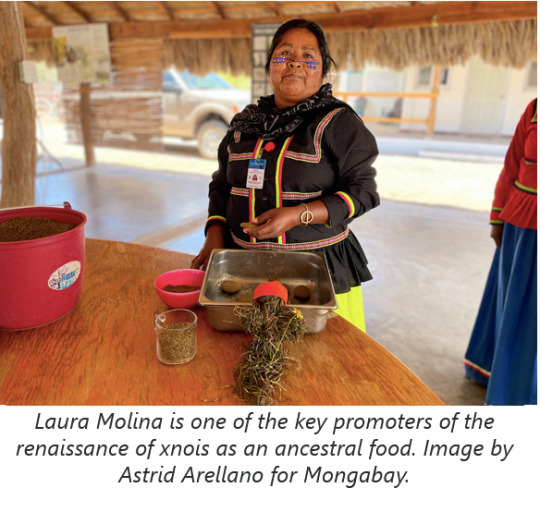

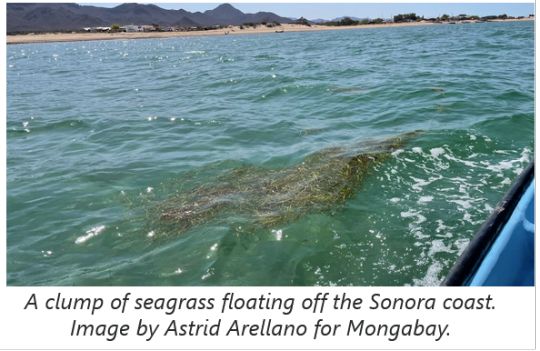

“He was the messenger of a great spirit,” says René Montaño, a Comcaac linguist. [...] Montaño is addressing the entire community at a cultural festival in the Comcaac territory in what is today northwestern Mexico. He talks about how their ancestors learned that xnois (Zostera marina), a type of seagrass also known as eelgrass, could feed their people.
“Zostera marina is paramount for us,” Montaño says. “There are other parts of the world where it barely exists, but here, in this channel, there’s plenty. [...]”
Comcaac [...] fishers learned that it was a food that would give them the necessary strength to survive long ways at sea, and the different ways it could be prepared were passed down from generation to generation. In the past few decades, this knowledge has been largely neglected. Today, the Comcaac people are breathing new life into it.
Comcaac environmentalists Alberto Mellado and Erika Barnett [...] have been developing a study since 2020 [...]. The Infiernillo Channel, located between the Sonora coast and Tiburón Island -- the largest island in Mexico and a sacred site for the Comcaac people -- is a Ramsar site, meaning it’s a wetland of key global importance. It features seagrass meadows, mangrove estuaries, and small patches of coral reefs where various marine species feed. [...] The channel is also home to 81 species of invertebrates endemic to the Gulf of California, and various threatened species, like totoabas (Totoaba macdonaldi) and sea turtles. [...]
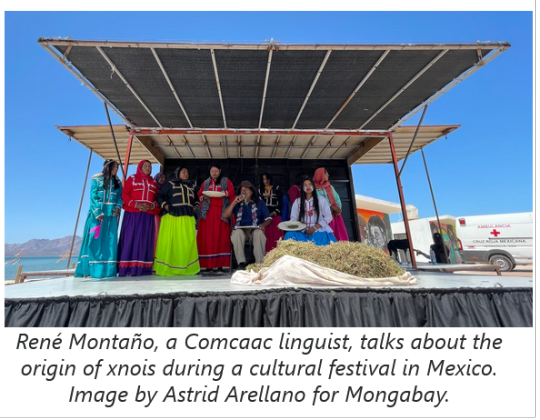


In early 2022, as part of this initiative, the team created an event that brought together chefs and biologists from Sonora, the U.S. and Spain who were interested in the culinary uses of xnois and in the conservation of seagrass. There, the Comcaac cooks shared their knowledge about the ancestral ways of preparing xnois: ground by hand to make flour for tortillas or tostadas, or as a drink made with warm water combined with honey [...]. Newer ways of preparing xnois were also on show, such as in energy bars, hotcakes, and bread in combination with wheat flour. [...]
Today, it’s Comcaac [...] like Laura Molina working to promote the benefits of xnois [...]. In a workshop [...], she flattens small dough balls into tortillas and toasts them over a fire. She says the first time she heard about this ancestral food was from her grandmother. Years later, she asked her mother to teach her how to prepare it. [...]
Erika Barnett says her great-grandparents were probably the last ones in the family to harvest eelgrass for the seeds. She says the fact that her father, now 76, can once again eat food prepared with xnois represents a great success. “The last time he’d eaten it, he was 7 years old,” she says. “Most young people have never tasted it, so this effort is really rescuing our culture.” [...] “The guys and my colleagues didn’t know how to prepare xnois, but I’m happy because we’re teaching them and the kids and adults who want to learn,” Molina says. “This is thanks to our ancestors. [...] [T]hey opened the path that led us here.”
---
Headline, images, captions, and text as published by: Astrid Arellano. “Indigenous Comcaac serve up an oceanic grain to preserve seagrass meadows.” Mongabay. Translated by Maria Angeles Salazar. 3 March 2023. [Photos by Asstrid Arellano. This story was reported by Mongabay’s Latam team and first published on their Latam site on 6 June 2022. Some paragraph breaks added by me.]
547 notes
·
View notes
Text

Forgot to share my most recent completed project! This is Zostera! His lore? He is blue. :)
46 notes
·
View notes
Text
Crelog #2
(for optimal viewing, please use a computer and blog address ^^)
This is the second Novinitum D crelog! (a.k.a. creator log. I know, very creative). These are basically like devlogs but for my specevo and worldbuilding projects. Entries where it's me updating yall on the behind-the-scenes stuff and also asking for feedback on occasion, maybe even a poll, we'll see.
It's been a while! Happy 2024! In this entry I'll be discussing some major changes about the planet + a tentative list of seeding taxa! It's very brief but I think I owe it to the very small handful of people who've shown interest in this project.
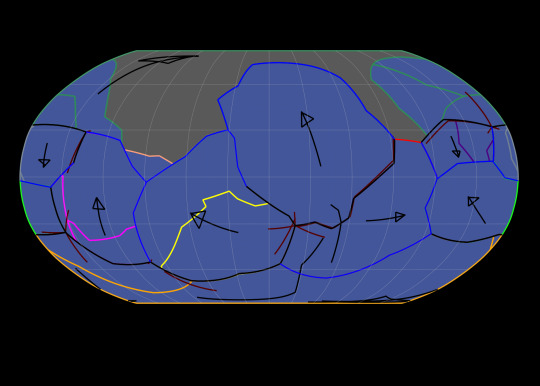
sneak peak into what this crelog features
Previous crelog [#1] <- [#2] -> Next crelog [#3] 🗒️Crelogs🗒️
~~~~~🌎🌍🌏~~~~~

the state of the world map at 0 MY (the massive blank space is part of a plate which is too big for gplates to render)
The eagle-eyed amongst you will notice that not only is this an entirely different map, but that I'm starting from an entirely different method. Instead of starting with a super continent which splits apart - like in Worldbuilding Pasta's method (link to their blog here) - I've started from the oceanic plates first, essentially starting the world from scratch. The map at 50 MY will be seen when I reveal the name of the first time period.
~~~~~🐟🐟🐟~~~~~
This list is very tentative but most likely will stay the same:
Animals:
Operculaurisichthys
made up fully pelagic Grimothea species
reef building oysters
scallops
copepods
made up Argyroneta species
clam shrimp of marine and freshwater varieties
made up thalattosuchian genus
made up starfish genus
made up Ptychoceras species
made up Squalus species
made up lanternfish species
made up pycnodont species
Plants:
Zostera marina
indeterminate algae
Valonia ventricosa
indeterminate phytoplankton
Fungi:
marine lichens (I know these aren't true fungi but for simplicity's sake they're here)
That's all for now! There should be more coming soon since progress has been incredibly quick since the change in plate tectonic method
#NovinitumDCrelog#worldbuilding#spec evo#speculative biology#speculative zoology#GPlates#plate tectonics
8 notes
·
View notes
Text
Yesterday in a conversation with an undergrad, my PI mentioned that he was planning to go to the university’s marine station today to sample seagrasses. This was my first time hearing about this and I (naively I guess?) assumed that he had been planning this all beforehand. I asked if I could go if it wasn’t too much trouble (I sit in front of a computer all day and I miss the grass) and he said yes so I was like cool great. THEN at 4:30 in the afternoon, aka 30 minutes before I have to run to catch my train he was like “hey can you find a rental car for tomorrow?” and I was so fucking speechless all I could say was “yeah sure” and frantically tried to find a place, none of which were both located nearby and had pickup times that we needed. But I found one. And I couldn’t send him a link to it because the stupid rental website was storing all the work I did in the cache or whatever (idk I’m not a scientist) so I literally had to hand. him. my. computer. so he could pay for the car. AND THEN I realized wait this is an all day trip should I bring lunch because idk what the culture is in this lab (as if there’s any lab culture whatsoever but that’s a broader issue) /university and I asked him as I was leaving if we were stopping somewhere and he was like “oh food that’s a good point haha” (!!!!!!) and then I thought oh wait what about gear, like does the marine station have boots or waders we could rent? what’s the tide supposed to be like tomorrow? what sites are we going for? are we targeting Phyllospadix or Zostera because they live in super different habitats and require different sampling gear? And he had no answers to these questions. Also the low low tide today is -0.1’. Also he told me that Phyllospadix is not a seagrass, which, it literally fucking is and he had to pull up Wikipedia to check. So then he sent an email to everyone asking me to provide logistical information for tomorrow and I replied with as little snark as I could saying things about what to expect from the habitats and where to find the grasses. I realized I forgot to mention that nearest location of Zostera is in a national estuarine research reserve and I would be very surprised at this point if he’s considered permitting.
But you know what the best part about being tasked with planning a trip I didn’t know about the day before? Since I wasn’t planning on coming until less than 24 hours before, I can back out just as easily. You’re welcome for my help. What were you going to do if I hadn’t expressed interest in coming?
#I hate it here so fucking much#none of this was in my job description#thank god I only have one more year of this#I can't imagine being a grad student in the lab#like there's clearly differences in planning style between us#I need to know all the details long in advance or time to figure them out if I'm tasked with leading the trip#he's okay with just flying by the seat of his pants and it doesn't bother him#and that's fine#but I need to send a sternly-worded email and have a conversation about boundaries#this isn't the first time something like this has happened but it's certainly the worst#it's disrespectful of my time and my expertise#Collin does science
3 notes
·
View notes
Text
hi there gamers. it's 1 in the morning. i just wanna tell you a really fun fact about the funny alien rhi pokemon go!
so you might already know that all members of the ultra recon squad are named after seagrass or algae.
- soliera/mirin is named after solieriaceae or solieria pacifica (a red algae)
- dulse is,,just dulse/palmaria palmata (a red seaweed,,which is an algae)
- zossie/amamo is named after the zostera genus, which is common eelgrass
- phyco/shionira is named after the syringodium filiforme or phycoschoenus nakai, which is just noodle seagrass
but! what the hell is rhi supposed to be named after? was it a random name? probably. but i ended up finding out that there's a species of seagrass that fits!
meet the thalassodendron pachyrhizum! it's a species of seagrass in the cymodoceaceae family, which is the same family that has phycoschoenus. so that's pretty cool, i think! it also fits perfectly, since phyco and zossie, the two members of the urs who don't fight you, are named after green seagrasses. while soliera and dulse, the ones who do fight you, are named after red algae. rhi's yet another seagrass who doesn't fight with you!
i feel like i should try to edit rhi's bulbapedia page and add that...
#pokemon#pokemon go#rhi#ultra recon squad#pokemon ultra sun and moon#dulse#soliera#phyco#zossie#mac speaks
21 notes
·
View notes
Text






zostera marina at low tide.
7 notes
·
View notes
Link
I remain fascinated by the advanced agricultural and maricultural practices of the first people to inhabit the Americas both north and south. This document talks about the propagation and proliferation of Eelgrass as a food crop. Eelgrass is an important habitat for other species including forage fish like Haring consumed by both people and salmon and has led to the decline of both fish populations as well as Southern Resident Orca populations in Puget Sound.
.
8 notes
·
View notes
Text
The Canadians are afraid of geese because they nest up there. Down here, however, they're just chillin. They're just grazing. Nothing but grazing. Lawn grass, dandelions, even the fucking sea grass Zostera marina. Yeah! They'll paddle through the shallow ocean, duck their heads underwater, and graze on sea grass!!!!
It is tragic that Canadians are traumatized by these guys, I love them with all my heart. Come to Tacoma, you will see.
2 notes
·
View notes
Video
youtube
In Swedish, "havslyme gräs" (pronounced "hav-slee-meh grehs") refers to "eelgrass" or "zostera" in English. It is a type of marine ...
0 notes
Text
youtube
Finding Myriolecis zosterae (Lecanora)
1 note
·
View note